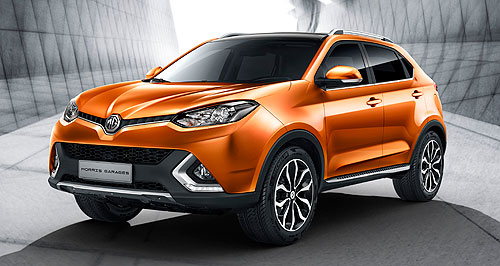News - SAICSAIC pledges aggressive global expansionComing: SAIC says its current MG and LDV vehicle line-up is the tip of the model-range iceberg. Chinese automotive giant, SAIC, promises a full line-up of vehicles on world market11 Nov 2015 By RON HAMMERTON in DUBAI CHINA’S biggest motor company, SAIC Motor Corporation, has embarked on what it describes as an aggressive global sales and manufacturing plan, promising a full range of passenger and commercial vehicles to tackle the world’s automotive giants head on. The company executive overseeing this expansion beyond China’s borders, SAIC international business executive director Yang Xiaodong, told Australian motoring journalists in Dubai that SAIC needed to venture on to the global stage if it wanted to be successful, not just in export markets but also in China itself. “We want a global footprint, with international operations, global competitiveness and global brand image,” he said. “We also have a very aggressive plan for the next five years. So, in future, we will be very aggressive on the footprint in terms of design centre investment, manufacturing and also the local marketing.” The roll-out includes Australia, where SAIC already sells its LDV van range and is about to embark on another attempt to consolidate its MG brand via a new factory owned distribution company, MG Motor Australia. After a false start under an independent importer two years ago, SAIC has taken direct control with a plan to relaunch with two models – the mid-sized MG6 and light MG3 hatch – in March, followed in the third quarter by the new MG GS mid-sized SUV that the company expects will be its biggest seller, both in Australia and globally. Formerly Shanghai Automotive Industry Corporation, SAIC is owned by the Shanghai provincial government – a common arrangement in communist China. A long-time partner for both General Motors and Volkswagen in China where it produces more than five million vehicles a year to make it the ninth-biggest motor company in the world, the cashed-up SAIC has chosen the former British brands, MG and Maxus (LDV in Australia) to carve out its own path on global markets. So far, progress has been modest, with, for example, just 2500 MG vehicles sold last year in the UK where SAIC retains the MG and Maxus design and engineering operations along with a small CKD (completely knocked down) assembly plant for MG6. But Mr Yang – a former head of SAIC partner VW in China – said his company was optimistic that a proliferation of new models now under development would help to propel quick growth over the next years. “We are optimists – we do see the growth rate as huge,” he said. Mr Yang said that despite its size in China and, increasingly, overseas, SAIC did not yet see itself as a direct competitor for the established global players. “We are the biggest in China, but we are not there yet compared with Toyota, Honda – we are not there yet,” he said“If we want to be successful in China, we must be successful in global. If we are not going to be competitive in other regions, we are not going to be competitive in China. “So strategy-wise, that is the rationale for why we want to have an aggressive plan in other regions.” As GoAuto has reported, at least two more SUVs are planned for the MG line-up – one either side of the new GS that was SAIC’s star of the motor show in Dubai where the Chinese company has just opened its Middle Eastern base. Mr Yang said SAIC’s new factory in Thailand would be the manufacturing base for right-hand drive vehicles for markets such as Australia. But he said initial shipments of MGs would come from China until the Thai plant was ready to take over RHD production some time in the next five years. Mr Yang was non-committal about prospects for a born-again MG drop-top sportscar, saying previous such MGs, including the MG F that the company built for a while in England after it took control of MG Rover in 2005, had mainly appealed to “senior people”. He said SAIC was determined to make MG a more vibrant brand, appealing to a wider audience. “We want to redesign MG to be more fashionable, more dynamic, with more passion,” he said. Mr Yang said new technologies, at least partly developed by its own research centre now established on California’s silicon valley, would play a major role in this reinvention. “This includes new-energy vehicle, automatic (driving) vehicle, internet vehicle and traditional vehicles,” he said. While Mr Yang said SAIC aimed to have a full range of vehicles to offer customers in world markets, he added: “Maybe not luxury vehicles.” Asked if SAIC had plans to enter the United States market, he answered by saying: “We start from new emerging markets, but we still have to have a good plan in place.” Mr Yang said SAIC’s five-year export sales targets were now being considered by the SAIC board in Shanghai, but he could not disclose them. He denied that SAIC was seeking export growth to cover for the slowing Chinese market, saying the export roll-out had started well before the current flat market. He said SAIC was still predicting Chinese market growth of three to five per cent over the next five years.  Read more |
Click to shareSAIC articlesMotor industry news |

















Facebook Twitter Instagram